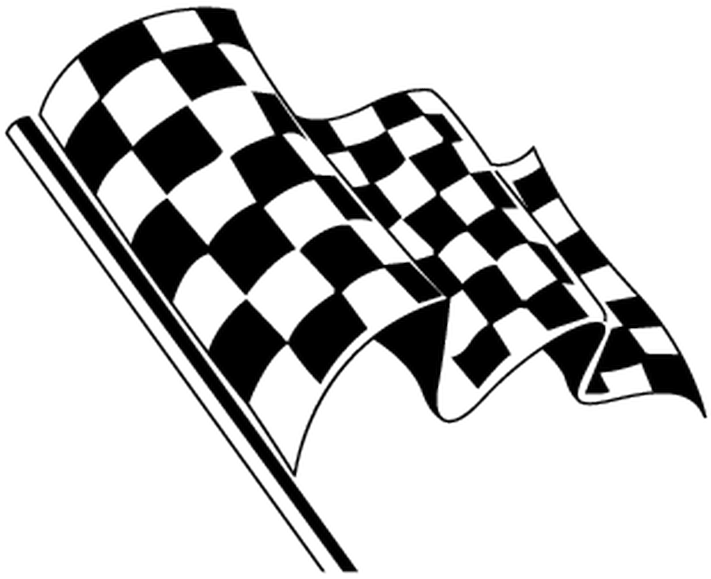Unfold our FTC disclosure melodrama here. Updated Nov 22, 2024, this article contains one or more maps ...
Finding Fun Roads In The Flatlands
It's an annoying truism of modern life. Why are so many of the places we need to live, with jobs, homes, and family, located in such boring flatlands? How exactly, in this ping-pong table of a state, am I going to find twisty roads near me?
Well, we know why; it goes back to farms and transportation, and the generations of economic activity that arose from convenient tillage and movement of goods.
Fast-forward a hundred years or so, and the fuel-injected, ABS-equipped descendants of all those farmers and mule skinners are squaring off their tires and raging at the far-off, flat horizon in frustration.
Here's how to milk a few interesting roads out of any landscape.
Get Small
The first principle to keep in mind is that you're going to be looking for smaller roads. All the bigger roads in the flatlands are also going to be flat and straight because that's cheaper and easier to build. I guess people in cars like 'em that way, too.
You'll also have to deal with the fact that these roads are often unmarked, or marked with a name or number that has no relation to official or online maps. That's where having some sort of GPX mapping or navigation gadget with offline maps while you ride will really shine.
Learn to love those faint traces on the map. They're not big enough to just plow through or over whatever is in the way. They have to go around, and therein may lie a few of those curves we crave.
Look For Green Lumps (You'll Find Twisty Roads)
Fire up your favorite mapping website, like RideWithGPS or Google Maps, and turn on the terrain layer. This will show a nice shaded view of the shape of the land, (if it has any shape besides "table"). You probably won't see much variation at first, but slowly zoom out and see if any lumpy bits pop up.
You're also looking for areas of darker green; these indicate lands set aside in some way. Parks, state or national forests, reserves, etc.
Make note of these areas, then zoom in until you can see the roads, and see if any are candidates for an in-person scouting mission.
Hit The Water
Another source of cool, refreshing roads in a curve desert is water. Even in the flattest of flatlands, rivers and creeks follow their own inscrutable winding logic, and the roads nearby do too. Many have roads following one or both banks, more or less, and roads diverge and converge on bridges.
Lakes and ponds can also create interesting wrinkles and diversions where you'll find twisty roads. Of course, water also tends to attract crowds, so try to give teeming waterside communities a wider berth.
Whether you're using an online map or scouting in person, keep one eye out for places where water used to flow. Rivers and creeks change course in surprising ways over long periods of time, and leave behind remnants like oxbow lakes (curved slivers of water or terrain that were part of the former riverbed) and the roads that used to follow or divert from the old courses.
Speak To The Trees
Now switch to the "satellite" view in your online map. Look for lines and blobs of trees and vegetation. If they're straight or rectangular, they probably just follow arbitrary property lines and fences laid down long ago.
But if you can find some tree lines that meander, they probably follow small creeks and maybe, just maybe, there's an interesting road nearby. The same goes for irregular blobs of trees; these sometimes mark a place where farming was too difficult (maybe a swamp, maybe a ridge or hill, etc.), and sometimes the roads in these areas do something interesting as well.
And of course the same goes for in-person scouting missions. Keep an eye peeled for irregular lines of trees and other hints of water or terrain between you and the horizon.
Paved Or Unpaved?
By now, it's probably obvious that many of the roads we're talking about are going to be unpaved. If gravel's not your jam, then there are a few unreliable ways you can settle the question, and one certain way.
In RideWithGPS or Google Maps, look in the lower right-hand corner and drag that little yellow guy into your map. If a road lights up blue, it's been scanned by Google and is likely to be paved. Drop the little fella onto the road you're investigating, and drag the camera view around to verify the presence of pavement, maybe even road lines.
Did you find twisty roads?
Of course, Google doesn't know all; lots of roads haven't been graced by Google yet. Sometimes you can sneak a peek at an intersection and get an idea. Or zoom in on the aerial view and look for dust. Sometimes you can even find real estate listings with photos of houses that might mention or depict the roads. Or give Microsoft's Bing Maps a try, since Bing uses different data sources.
In the end, the only way to know for sure is to go take a look. Which brings us to ...
Go On A Mission To Find Twisty Roads
A great way to give any ride a bit of juice, if not outright excitement, is to have a mission or purpose other than riding around in squares.
And of course one of the best missions is scouting. Get out there and see if all those bits and pieces of roads and potential roads actually exist, whether they're passable and paved, whether they're actually interesting, and what sights there are to be seen.
River parks, for example, are usually great spots to stop and enjoy scenery and shade. Or maybe you'll find some weird roadside plaque from a nearly forgotten bit of history.
There are lots of other "missions". For example, go wander around several of those tiny local airports dotted all over the country and see if any cool airplanes are buzzing around. Or go plane spotting at a big airport, or follow some rail lines and go trainspotting. Look for small town car shows and festivals. Look for weird road names, or towns with weird names. See if you can stitch together letter roads into words. Dig into some aspect of history, like WWII, the Civil War, etc. and go look for the remnants. Rummage around some old downtowns. Look for local restaurants.
Get Knobby And Get Dirty
You know all those gravel roads you're crossing off your list? Maybe it's time to consider adding a dual-sport bike to the stable, one you can use to reel some giggles no matter what kind of road you're on.
Something like a KLR650 sporting a pair of decent 50/50 tires will handle pavement, bad pavement, gravel, and dirt roads with aplomb, and you'll have more fun just plonking around at middlin' speeds than you ever thought possible.
Plus, you'll add immeasurably to your skills on all bikes on all surfaces. Spending some quality time on loose surfaces is a great way to fine-tune your reflexes.
Get Good
One often-overlooked way to stave off the shakes is to get in a skills session. Grab some tennis balls, slice 'em in half, and lay out your own private gymkhana course in an unwatched parking lot (of course, if someone tells you to buzz off, then politely do so.) If you've graduated from a skills course, lay out a few exercises in tennis balls and get in some extracurricular practice.
Or, practice some cone weaves and braking using the existing lines and dividers. You could also find a gravel lot and get used to things like braking on loose surfaces, or practice u-turns.
You can also create challenges for yourself to increase your skills and learn about your machine. Try braking with only the front or only the rear a few times just to see what happens. Or see how slow you can ride, and how long you can balance at a stop without dabbing a foot.
Yes, You Can Find Twisty Roads In An Urban Wilderness
I'll confess: I often stitch together an hour of amusement simply by leveraging the 150+ roundabouts in the county just to my north. Roundabouts are good practice in all the aspects of cornering and control, and honestly ... yeah, they can be a lot of fun. (They can also be a lot of slippery depending on what the cars spew, so don't get too terribly frisky.)
You can also find some "artificially" interesting curvy roads in places like office parks, where the developers create curves so that the place doesn't seem so industrial and sterile. These are often nearly empty in the evenings and weekends, although they tend to be patrolled and the pavement gets beat up from trucks. Use extreme caution.
Housing developments often contain similar curvery, but for obvious reasons are best avoided. Knee-down antics won't be appreciated by people with kids and dogs.
Stuck deep in the bowels of a big, flat city? You can still find surprising scraps of entertainment here and there, for example in places where surface streets have been combined or re-routed to avoid other roads or go around large facilities like airports and malls.
Interstate on-ramps and off-ramps have curves and speed, but they also tend to be crowded with traffic and dangerously slippery with greasy car-spew. Best to treat these very carefully, and stay to the inside of the curves.
Tour And Trailer
Let's face it: sometimes the only way to get some two-wheeled excitement in your life is to go get it somewhere else. This very website is focused on sport-touring motorcycles perfect for this sort of thing, machines capable of crossing the featureless plains for hours in comfort and then railing the twisties when you reach the mountains.
Truth be told, vacation time is limited, and motorcycle tires are short-lived and expensive. So in our eyes, there's no shame at all in getting the boring bits out of the way fast in air-conditioned, soda-sippin', pork-rind-munchin' comfort while your bike rides comfortably out back. You can easily make 700 miles a day trailering, more if you share the driving.
Sometimes trailering is simply the best option for arriving at the good stuff fresh and with un-squared tires. And, of course, trailering lets you get back to the ol' grindstone in time to punch in on Monday morning. You gotta pay for gas and motorcycle tires somehow.

What's Your Twist?
If you're a slobbering, red-eyed, jittery curve junkie stuck in the flatlands, how do you find enough entertainment to stay sane? You're in a safe space here, with friends who understand your pain. Your input is invited. Leave a comment and/or write an article!



